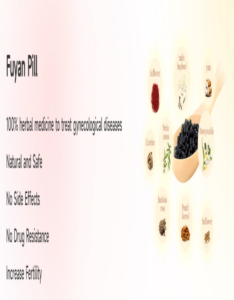Some writers seem to have a magic touch…
One minute you’re reading their introduction, and before you know it you’ve reached the end of their post.
Their content reads so smoothly, it’s almost impossible to stop.
How do they do it?
Well, it isn’t magic.
Great writers are meticulous about making each sentence flow seamlessly into the next. They understand how important it is for readers to have a smooth reading experience, and they remove anything that could cause friction.
In short: they use transition words.
Today, you’ll learn how to use them. But first, let’s examine why they’re so important.
The primary purpose of each paragraph you write isn’t to make a point, or to build your argument, or even to convey valuable information.
It’s to get your reader to read the next paragraph.
Famous copywriter Maxwell Ross likened this to a “bucket brigade.”
Here’s why:
In the days before fire trucks and pressure hoses, people would put out fires by forming a human chain. They would pass a bucket of water from one person to the next until the last person finally threw it onto the fire.
In those days, it was vital the chain remained unbroken. If the bucket wasn’t passed smoothly from one person to the next, the water would spill.
Likewise, each paragraph you write must pass the reader on to the next one.
Really, the point of your first sentence is to get your second sentence read. And the point of the second sentence is to get your third sentence read. And the point of your third sentence — well, you get the idea.
Now, just like in a real bucket brigade, the chain must be unbroken, or you will “spill” readers along the way.
And that’s where transitional phrases come in.
Your writing is a series of ideas, propositions, and arguments placed one after the other.
But those ideas need to be linked together. You need transitional words and phrases to help readers understand how ideas relate to each other.
Without them, ideas end abruptly while new ones clumsily begin. Transitions make the ride smoother. They’re connecting words — they connect one idea to another, again and again, over and over.
On the plus side, you probably already use a few good transition words in your writing (to some extent). Many people use them naturally.
But most likely?
You’re barely scratching the surface.
Let’s remedy that, shall we?
Here are the different categories of common transition words and phrases, a list of transition words for each, and multiple real-world examples.
How it works: You claim to know what the reader is thinking, or you assume the reader agrees with something you’re about to say. The reader will then want to find out if you’re right.
Transition Sentence Examples:
Real-World Example:
So, you’d like to take blogging for a test drive, eh?
See if you like it or not before ponying up the bucks for a complete self-hosted WordPress setup?
You’ve probably heard you can start a blog for free, and indeed you can. The big question is:
What’s the best free blogging platform right now?
And the answer is… it depends on what you’re trying to accomplish.
How it works: You literally tell the reader you’re about to share an important piece of information. Nobody wants to miss anything important, which is why this simple transition phrase will pique your reader’s curiosity.
Transition Sentence Examples:
Real-World Example:
Power words are like a “cheat code” for giving your writing an emotional punch. Sprinkle in a few, and you can instantly transform your writing from dull and boring to sizzling with personality.
And the best part:
You can use them anywhere.
How it works: You hint you’re about to share an important insight or discovery. Your reader will be curious to find out what it is.
Transition Sentence Examples:
Real-World Example:
As you saw in that post, page-specific offers convert WAY better than something generic (like “free updates”).
For example:
In my Google Ranking Factors post, I give away a checklist that makes the information from that post much more actionable:
And then it hit me:
Why would I offer someone something VERY specific with The Content Upgrade…
…and then turn around and make a generic offer in my popup?
That doesn’t make any sense.
How it works: You hint at a problem or obstacle keeping the reader from reaching their desired goal. The reader will want to know what the problem is (and they’ll assume you’ll also provide the solution).
Transition Sentence Examples:
Real-World Example:
That’s what makes the idea of “evergreen content” so appealing — it’s supposed to be immune to fickle fancies and flavors of the month.
But here’s the problem:
If your evergreen content is forgettable, being “timeless” is pretty pointless.
Your content could be relevant and evergreen until the end of time. But if it’s bland, it won’t matter. If it’s boring, no one will care. If it’s forgettable, its timelessness is wasted.
How it works: After you identify a problem or obstacle for your reader, show them the solution.
Transition Sentence Examples:
Real-World Example:
Despite any preconceptions, you can effectively market your blog without coming across like a used car salesman.
Here’s how…
Mix up your promotional messages with lots of useful and interesting content.
If you’re giving people useful information at the same time as promoting your e-book, you’ll feel less like a pushy salesperson.
How it works: Use this transitional phrase when you’re offering two (or more) big benefits to the reader. Typically, you’d start with the most important benefit first, and then use this type of phrase to transition into the additional benefits.
Transition Sentence Examples:
Real-World Example:
My favorite plugin for adding social sharing buttons is Social Warfare.
Not only do its sharing buttons look super-slick, but it’s built with performance in mind so its behavior is slick too.
The plugin allows you to add “Click to Tweet” boxes to your content – another way to encourage social sharing.
And you can also add Pinterest-specific images to maximize engagement on that platform. This is useful because taller images perform better on Pinterest but you don’t want to have to change the dimensions of your featured image.
And it gets better…
You can avoid negative social proof (people thinking that content with few shares is low quality) by hiding your share counts until you reach a respectable number.
How it works: Introduce an example to your readers. People tend to pay attention to examples because they help contextualize the main they’ve just learned. And it doesn’t need to be fancy. You’ll notice in our example we use a single transition word, and it does the trick just fine.
Transition Sentence Examples:
Real-World Example:
If readers see too much text when they’re scanning without enough pit stops, they’ll feel overwhelmed. It’s like getting on a bus tour and being told there will be no bathroom breaks … oh, the anxiety!
EXAMPLE:
Every single post on Smart Blogger.
Seriously.
That’s how important this is.
How it works: You hint at a clarification or supplementation of the preceding text. Readers will pay attention because they realize it will help them understand the information better.
Transition Sentence Examples:
Real-World Example:
There are lots of guides about how to make money blogging, but here’s what makes this one different:
I’ve taken three different blogs to over $1 million per year. In fact, the blog you’re reading right now has made a total of $5.3 million.
How it works: You transition from the theoretical to the practical. You introduce the steps the reader must take to get the promised result. This is the reason most of them are reading your content in the first place, so it will make them sit up and take notice.
Transition Sentence Examples:
Real-World Example:
In other words, your readers are already buying things. They are already going to make a purchase whether or not you give them any advice.
The question is, could you help them make a smarter decision than they could alone?
Because that’s where you add value. You earn a commission in exchange for helping people make smarter decisions, and you use your blog and the Internet to systemize that process, providing valuable advice to thousands of people.
Here’s a step-by-step process for doing exactly that:
How it works: You command the reader to stay on the page. Use this phrase whenever the reader might have doubts about a bold or shocking claim, or after you’ve doled out some complicated information. Most readers will feel compelled to comply.
Transition Sentence Examples:
Real-World Example:
I know, it’s heresy. Just saying that, I’m half expecting a mob with pitchforks to show up at my door.
But stick with me for a moment.
Over the last decade, I’ve created or helped create content that has generated over 200 million page views. What might surprise you though is the vast majority of that traffic was completely worthless. People came to the site, stuck around for a minute or two, and then left.
So yes, it’s an impressive number, but it’s also a meaningless one.
How it works: If you’re looking for a super smooth transition phrase, pose a question. Questions engage the reader’s brain and make them feel like they’re part of a conversation (rather than being lectured like you often find in pretenious academic writing). When you pose a question, the reader will want to know the answer, which means they have to keep reading.
Transition Sentence Examples:
Real-World Example:
In addition to The Bard, authors like Maya Angelou, Edgar Allan Poe, and Charles Dickens excel at sensory language. So do literally every famous poet you learned about in school.
And that begs the obvious question…
Why are sensory details so effective?
Short answer:
Our brains handle sensory words differently than ordinary words.
How it works: Rhetorical questions engage the reader’s brain the same way as curious questions — the only difference is curious questions hint at an upcoming answer, while rhetorical questions assume the answer. This will prime the reader to agree with you.
Transition Sentence Examples:
Real-World Example:
And it’s work you can do from anywhere.
One week, you’re on the beach. The next, perhaps you’re in the mountains. The week after that, you’re visiting family.
Sounds like a dream, right? Like it can’t possibly be real?
But it is.
How it works: You tease the big payoff or conclusion. Readers understand this is one of the most crucial parts of your article or story, so they pay close attention.
Transition Sentence Examples:
Real-World Example:
The good news is, you can dramatically speed up the process. Instead of wasting months or years chasing a bad idea, you can find out if it’s going to work in weeks or even days. In fact, the process I’m outlining here often destroys a bad idea within minutes.
The result?
You waste WAY less time. Instead of banging your head against the wall for months or even years before you finally figure everything out, you can adapt quickly and get to the right idea within a matter of weeks or months. It’s at least 20X faster. Probably more like 100X.
There are literally hundreds of common transitions you can use to keep your readers glued to the page.
And for a handy visual of the 13 types of transitional phrases we just discussed, check out the image below. Feel free to share and embed it on your own site:
Embed This Infographic On Your Site
When you master sentence transitions, you’ll notice readers will stay on your posts longer. You’ll notice more of them will read your posts to the end.
Don’t get me wrong; these phrases aren’t magic. They won’t turn a bad article into a good one.
But they can help turn a good article into a great one.
You still have to write content that’s, you know, of interest to your audience. But if you do, these phrases can help keep your readers glued to the page. One minute they’ll be reading your opening lines, and before they know it, they’ll have reached the end of your article.
So sprinkle transitional phrases throughout your content, and one day, you’ll check your analytics and notice people are spending a lot more time on your posts.
That’s when you know they’re doing their job.
Sounds pretty good, right?
The post How to Use Transitional Words & Phrases (+ Examples) appeared first on Smart Blogger.









